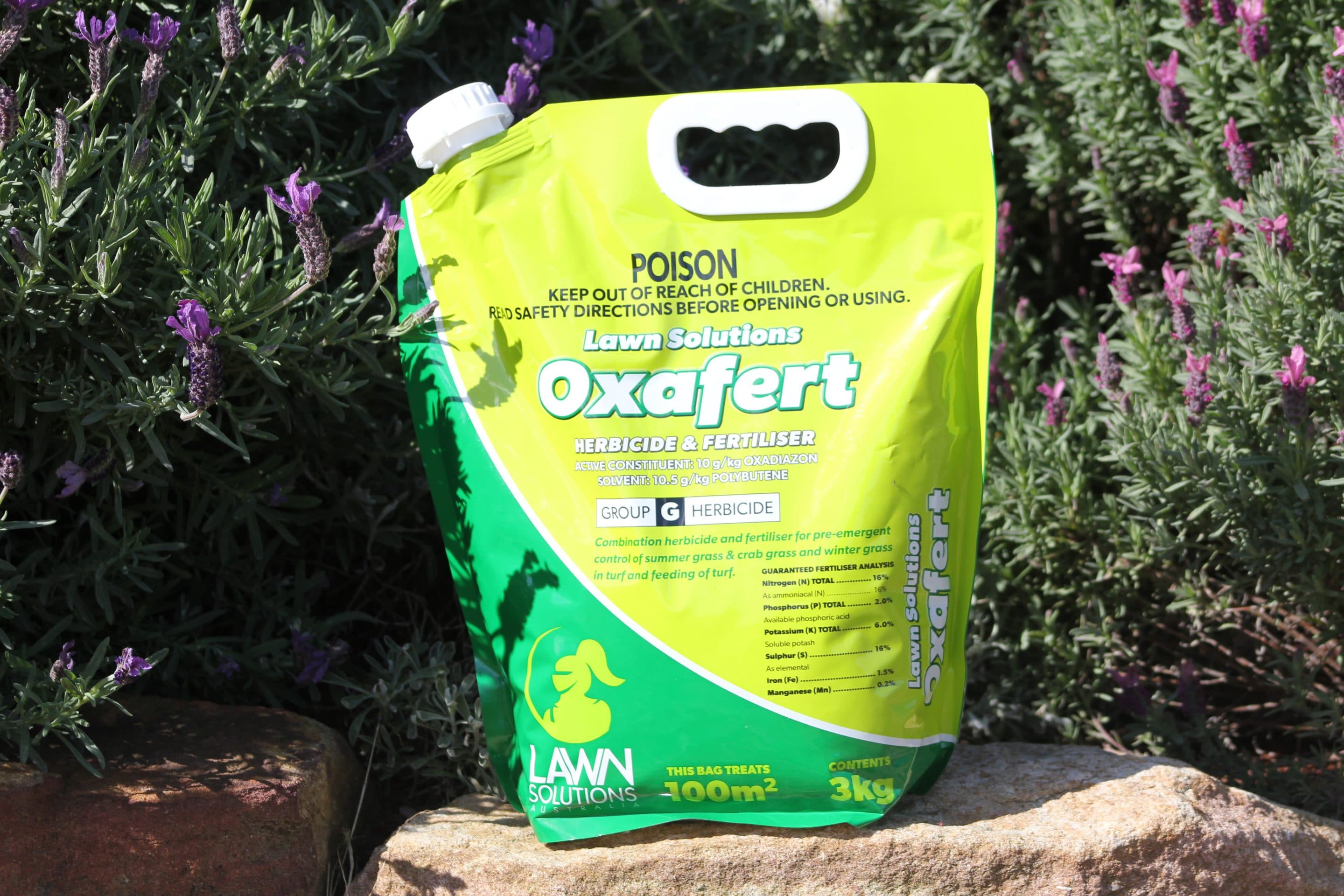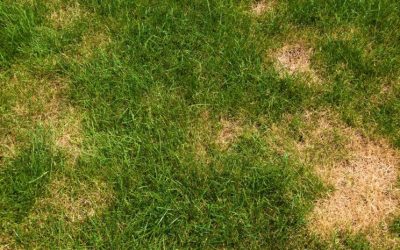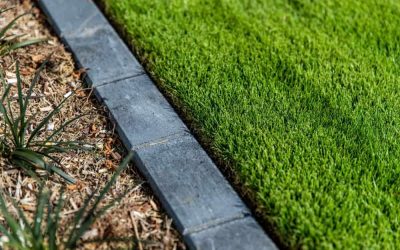How To Get Grass To Grow On A Damaged Lawn
4 Steps to Repairing Dead Grass
There is a long list of reasons why your lawn may be damaged and patchy – urine burns, scalping, uneven ground, compacted soil and more.
While you may be feeling overwhelmed, all hope is not lost.
In this article we will run through how to get grass to grow on damaged lawn as well as the best ways to avoid dead grass in the future.
1. Rake up the dead grass
The first step is to remove the unhealthy lawn and the best way to do that is with a rake.
While you’ll be left with some bare spots, it means that your soil surface is clear of dead grass and thatch, ready for new lawn.
With the ground clear, your lawn will be able to thicken up again and recover quicker.
This will also help more sunlight, water and oxygen to reach the new lawn or growth, boosting the health of the grass in these areas.
2. Aerate the soil
The next step is to aerate the soil with a garden fork. Often the reason grass struggles to grow is because the soil is compacted and the roots don’t receive the oxygen, water or nutrients they require.
Drive the garden fork 100mm into the ground and wriggle it back and forth to break up the soil.
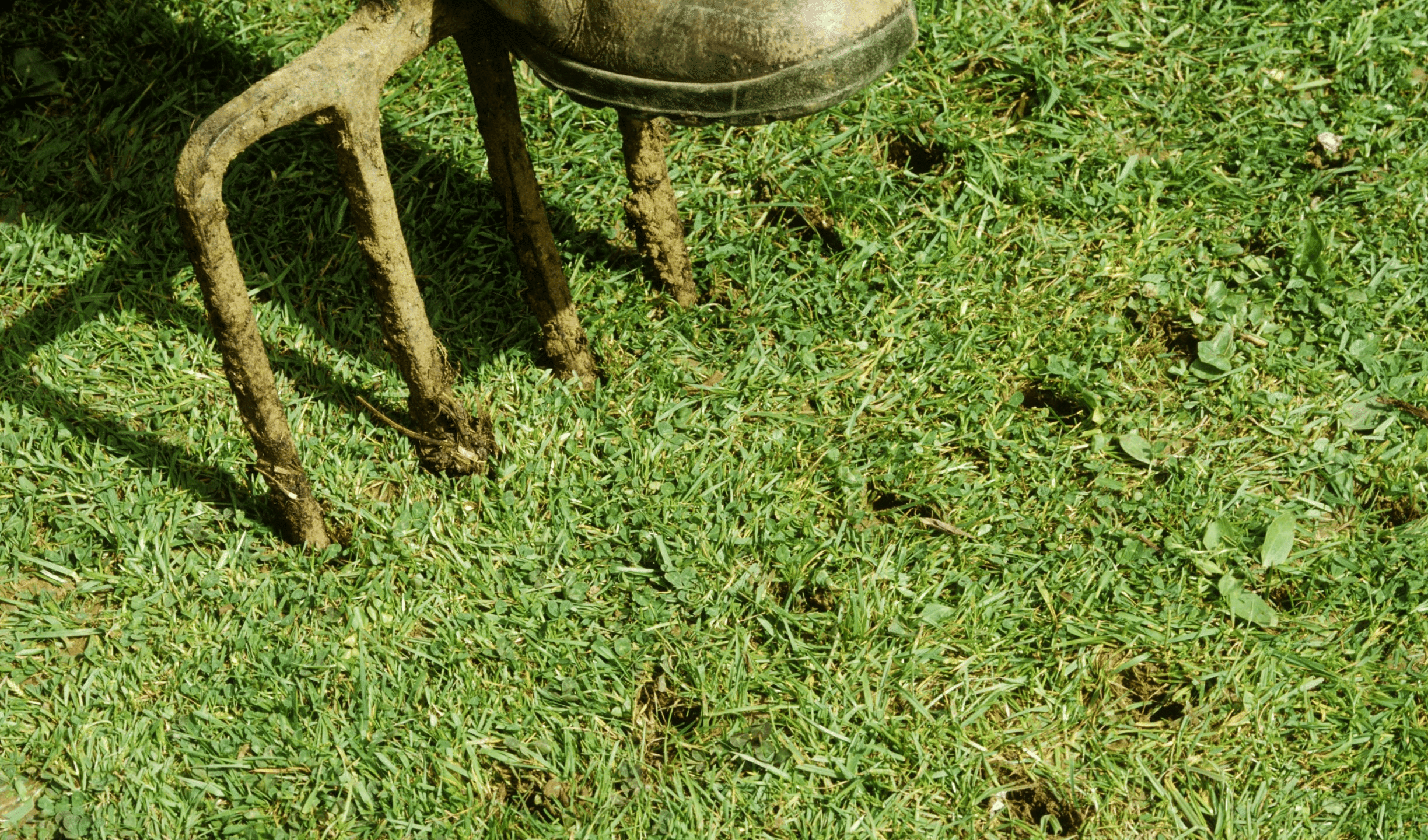
However, if you have installed irrigation, you do need to be mindful not to puncture any pipes by plunging the garden fork too deeply into the soil.
After aerating, you may wish to add soil conditioners to help improve your soil base.
3. Add new grass or encourage regrowth with topsoil
Depending on your damaged lawn and grass variety, you will have two options for repair.
You can establish new turf, or you can encourage your existing lawn to grow over the space.
Adding new turf
If you have large patches of damaged lawn, the best option may be to fill it with new grass.
For this, you should make sure to order the same grass variety as you already have.
Once the new turf has arrived, you’ll need to cut it to size with a spade or shears.
You’ll also need to make sure that all roots of the new turf makes contact with the soil. The best way to do this is to cut the patch in your existing lawn to the same size. See our Guide on How to Lay Turf.
Encouraging new growth
However, if you have a quick repairing grass variety and the rest of your yard is healthy grass, the best option may be to encourage it to grow into bare spots.
The work you did in the first 2 steps will greatly encourage your existing grass to fill in where the damaged lawn was.
As well as this, a light amount of topsoil in the bare and patchy areas can bring the levels up making it easier for the healthy areas to spread across.
Topsoil will not only improve the soil profile, it will improve drainage and provide essential nutrients to help strengthen the lawn.
Once you have added topsoil where the dead spot was, make sure to rake it so it’s spread evenly to ensure the growth of your lawn is even.
4. Fertilise and water
Finally, you should consider adding fertiliser to invigorate healthy growth. A quality slow release fertiliser will have a well-balanced mix of everything your lawn needs to get it onto the path of recovery.
Whether you have added new turf or topsoil, you’ll need to water your lawn thoroughly.
If you have added fertiliser, this will need to immediately follow to ensure the fertiliser doesn’t burn your lawn.
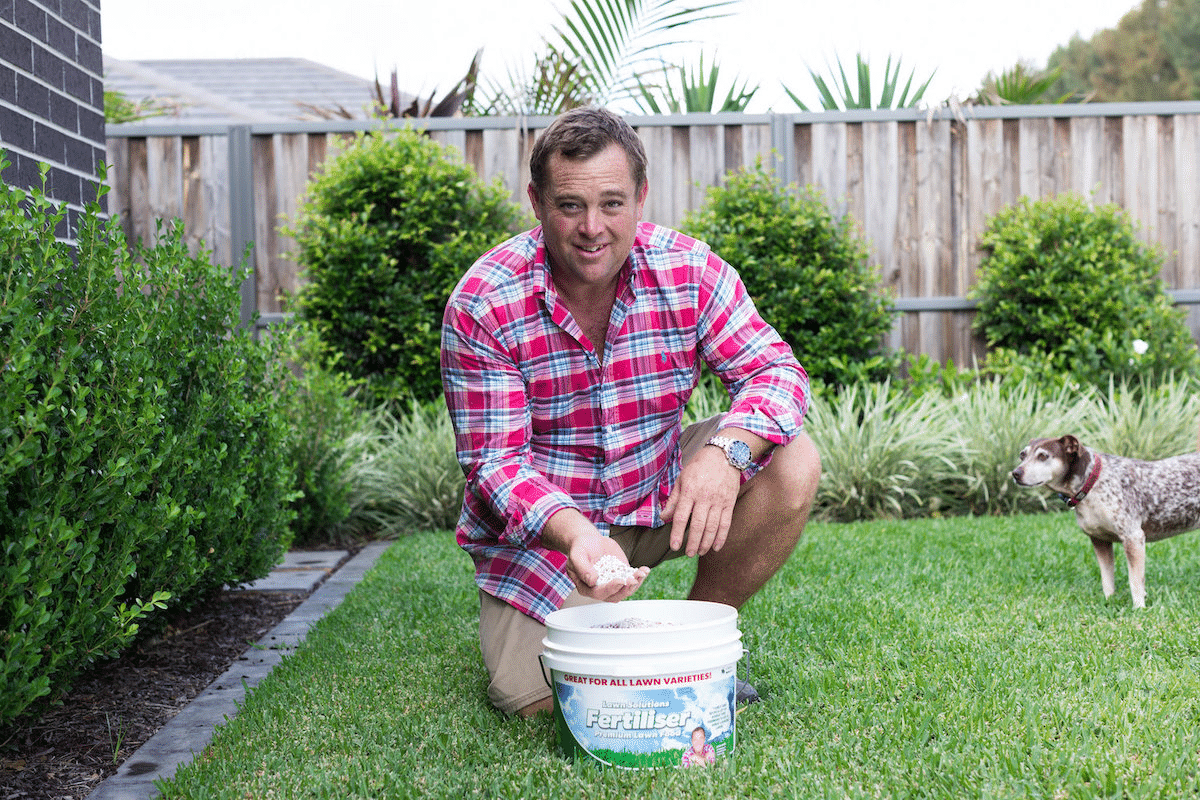
If you’re repairing dead spots in late spring or summer, you’ll need to continue watering frequently over the coming weeks to help the grass to grow as strongly as it can.
You will also need to water your recovering lawn in winter months, however it won’t need to be as frequent as the warmer months.
With water and sunshine your grass should see healthy growth and improvement over the months to follow.
Lawn Care to Establish New Grass and Encourage Growth
It can be easy to forget that a lawn needs some TLC to thrive, just like the rest of your garden.
Some of the ways you can work to keep grass healthy include mowing, watering, fertilising and weeding routinely.
Mowing
While encouraging your grass to repair, it will inevitably mean more mowing, especially in Spring and Summer.
To mow regularly, you will encourage your lawn to thicken, which will reduce weeds and make your lawn more resistant to lawn disease.

However, if you mow too often, or too low, you will find that it can damage your lawn.
To avoid this, follow the golden rule of mowing – never remove more than one third of the leaf blade off in one mow.
Watering
Another key element of lawn care is watering. If you’re not quite sure about when you should water your lawn, you can install a water meter as this will give you a better indication.
However, the general rule is to water infrequently (when it hasn’t rained recently) and in the morning or early afternoon.
Infrequent watering will help to encourage drought tolerance in grasses as the root zone will start to grow deeper in search of underground water.
Typically, you will find that in most seasons it will rain enough that you won’t need to water your lawn.
Summer, however, you may need to water your lawn once a week as it is incredibly hot and it doesn’t rain often.
Fertilising
Grasses require a wide mix of nutrients from the soil and will struggle to remain green and lush year round without all of these nutrients.
This is where fertilizer comes in. Fertilising your lawn each season will help to restore these nutrients and promote root and lawn health.
Depending on the season and the nutrients your lawn needs, you may decide to choose a different type of fertilizer.
Slow release fertiliser takes longer to come into affect, whereas liquid lawn feed will have almost instant affect.
Whichever type you choose, it is always important to water your lawn immediately and thoroughly to avoid lawn damage.
Weeding
Weeds are not only unsightly in lawns, they also consume valuable nutrients that is meant for your turf.
You may find that weeds shoot up once you feed your lawn, however, this is your opportunity to kill them before they have the chance to take over your yard.
How you treat weeds will depend on your grass variety and the type of weed.
Find out more about choosing a herbicide and natural methods of removing weeds in our guide to weed control.
Using a pre-emergent herbicide
You can also take control of weeds before they even appear.
A pre-emergent herbicide, such as Oxafert, will stop weeds from germinating, which means they will never become seedlings that appear in lawns.
Pre-emergent herbicide will also give your lawn a boost to improve it’s green colour.
These qualities make it a good option to spread on lawns seasonally, especially in early Winter.
Essential Lawn Care For Healthy Grass
To maintain healthy grass and avoid dead grass in the future, we have compiled our essential lawn care articles to give you helpful tips.
Increasing drought tolerance in lawns

read more!
recent posts
What is the Best Grass for a Lawn? A Complete Guide to Top Choices
Discover the best grass options for your lawn with our complete guide. Make informed choices for a lush, healthy yard. Read more to find your ideal grass!
Choosing the Right Weed Killer for Your Sir Grange Zoysia Lawn
Discover the best weed killer for Sir Grange Zoysia and essential tips for effective application. Enhance your lawn’s health and beauty!
Why Is My Zoysia Grass Dying? Common Causes and Solutions to Revive It
Is your Zoysia grass struggling? Discover common causes of decline and effective solutions to restore its health. Read the article for expert tips!
How To Repair Zoysia Grass
Learn effective solutions to repair Zoysia grass and achieve a lush, healthy lawn. Discover practical tips and techniques to restore your yard today!

Our Turf
TifTuf Bermuda
Buy Turf Online © 2019 All Rights Reserved. | Proudly Designed and Developed by Sydney ICT

